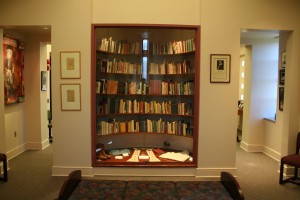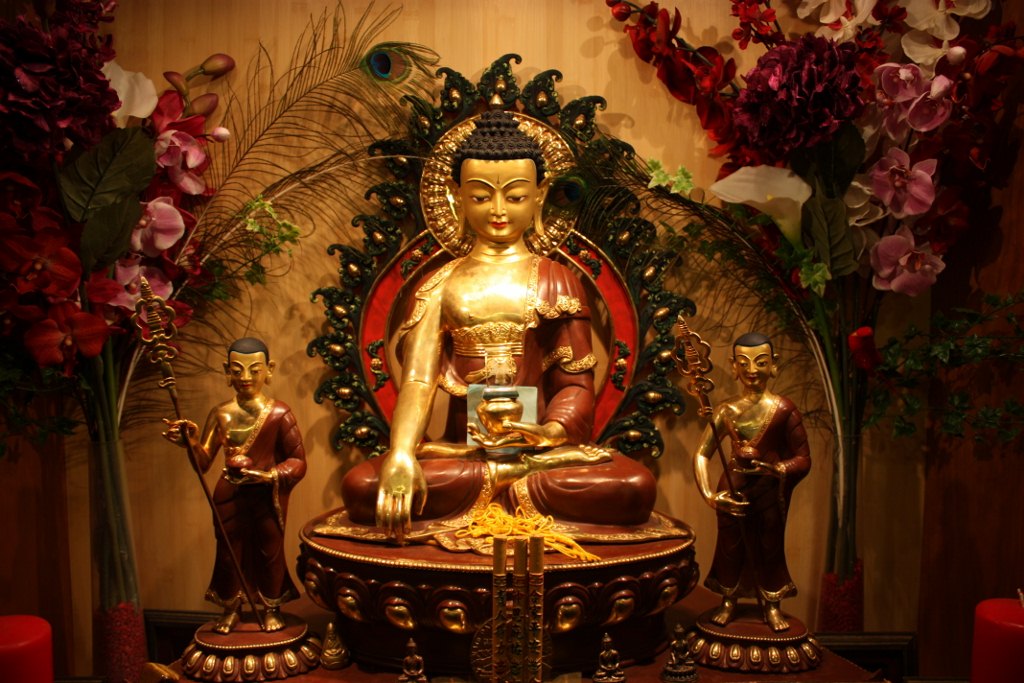
One of my favorite things about being a writer is getting the chance to ask questions of people who know a great deal about things I’m interested in. So I was delighted to have the opportunity to visit with Paul M. Pearson, director of the Thomas Merton Center at Bellarmine University in Louisville, which is the repository for Merton’s literary works and memorabilia.
In many ways it’s easier to get a sense for Thomas Merton the man and writer at this center than at the Abbey of Gethsemani. Of its exhibits, I was most intrigued by a display case that contains a selection of the few personal effects Merton had at his death. Inside are his monk’s cowl, faded denim workshirt, eyeglasses, camera, and leather boots. Monks don’t own very many possessions, after all.
Merton’s more important treasures were the books inside the display case, all ones in which he made marginal notes. Many of the volumes were given to him (and therefore to the monastery), and from his jottings it’s clear that he read them carefully. Their titles range across the globe, across faith traditions, and across millennia: books on Zen, Chinese philosophy, Sufism, St. John of the Cross, the spiritual heritage of India, meditation, and Kakfa were just a few of the titles I jotted down.
When I asked Pearson why Merton continues to be so popular around the world, he said this: “Part of it is that he was an extraordinarily clear writer and thinker. But I think it’s also because the people who read him almost feel like they’re reading their own thoughts, or maybe those of a best friend. He wrote so insightfully about spiritual matters and was so honest in sharing his own struggles. He was able to put people at ease, both in person and in his writing.”
Merton’s greatest gift to the world, Pearson went on to say, is the way he integrated the paths of Mary and Martha. (In the Gospels, Jesus visits these two sisters, one of whom was always busy with household tasks, while the other sat at Jesus’ feet and listened intently to his words). “Merton didn’t separate these two paths,” said Pearson. “He felt that spirituality and action were linked and that you needed both to be a whole person.”

My favorite part of visiting the center was this: on display there is a typewriter that Merton used, a simple manual model that hearkens back to an earlier day. I was delighted that it wasn’t behind glass, and I admit that I stood there for a long moment, my hands lightly touching the keys.











